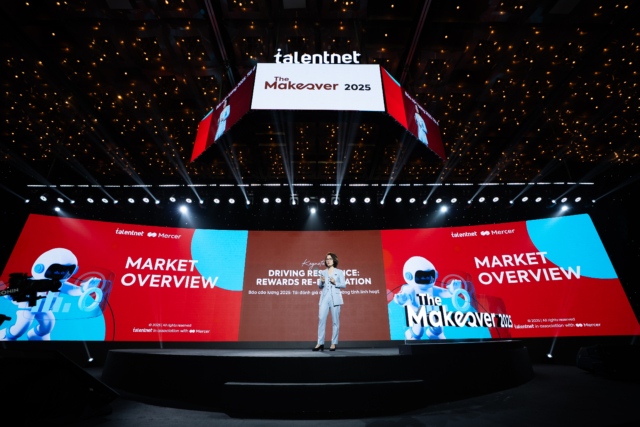Overcoming Employee Resistance to New Technology in Manufacturing

Jul 26, 2025
You invested in new technology to drive growth, but your biggest hurdle isn't the software—it's your team's resistance to new technology. This resistance often comes from real concerns: fear of job loss, worry about disrupting daily routines, and questions about whether new systems will actually help or just create more work.

Key takeaways
- Employee resistance to technology stems from natural fears about job security, workflow changes, and unclear benefits rather than problems with the systems themselves.
- Successful technology adoption requires visible leadership, clear communication, and active employee involvement in choosing and rolling out new systems.
- Strong training programs, gradual rollouts, and celebrating early wins create momentum that turns doubters into supporters.
- Companies that focus on getting employee buy-in for organizational change gain competitive advantages while those that ignore employee concerns face costly failures and missed growth.
- Leaders must shift from forcing technological changes to guiding people through transformation with clear communication and real empathy.
Success with new technology depends more on managing people than on technical features. Leaders who understand this truth set their companies up for digital transformation for manufacturing success. The most common barriers that create employee resistance to technology include:
- Fear of the unknown: Employees may worry about job security or feel anxious about adapting to unfamiliar tools and processes.
- Legacy mindset: Traditional manufacturing environments often prioritize established routines, making shifts to digital systems seem risky or unnecessary.
- Job displacement concerns: Automation and digital transformation sometimes spark fears of redundancy or role changes.
- Lack of involvement: When decisions are handed down without worker input, resistance can increase due to a lack of ownership.
- Insufficient training: Employees may feel unprepared if they believe they lack the skills to work with the new technology
A strategic framework for overcoming resistance
Think of resistance to technological change as valuable feedback rather than an obstacle to overcome. The companies that win at technology adoption treat people’s concerns as business intelligence that guides better implementation decisions.
Lead the change from the top
Your visible commitment is the foundation for successful technology adoption across your company. Without real leadership support, even the best systems will struggle to gain employee acceptance.
Clearly communicate your vision for how new technology fits with company goals and long-term growth plans. Employees need to understand not just what is changing, but why these changes are vital for company success and their own job security. Put the necessary money and people behind the transition to show your real commitment rather than treating technology adoption as a side project. Most importantly, participate in the change process yourself. Learn the new systems alongside your team and show through your actions that you are leading change, not just ordering it.
Building a strong CEO and HR relationship proves essential during technology transitions, as HR partners can help you address workforce concerns and facilitate smoother adoption across all levels of your organization.
Engage with empathy
The fastest way to reduce resistance is to make people feel heard, not dismissed. When employees see their concerns taken seriously, defensive reactions transform into collaborative problem-solving for overcoming resistance to change.
Set up clear ways for employees to give feedback, ask questions, and share their worries without fear. These must be real two-way conversations, not just going through the motions. Accept that resistance is a natural human response to change and treat it as useful input rather than a problem to solve. Find common ground with resistant employees by understanding their views and showing respect for their experience, which builds stronger relationships and creates support for the future.
| Resistance often signals legitimate operational concerns that, when addressed, actually improve your technology implementation. |
Involve employees to create ownership
When employees feel included in technology decisions rather than having changes forced on them, they develop personal investment in success and become supporters of adoption.
Include employees early in choosing technology by asking for their input on system needs, workflow fit, and practical challenges they expect. Their frontline experience gives valuable insights that can prevent costly mistakes and improve results. When possible, include key people in evaluating vendors and making final technology choices, giving them direct influence over tools they will use daily. This involvement creates ownership and responsibility that proves crucial for long-term buy-in and successful system use.
Understanding the modern workforce mindset helps you tailor your involvement strategies to what actually motivates today’s employees to embrace new technology.
Provide comprehensive training and support
Skills gaps create the biggest barrier between technology potential and actual results. Address this systematically rather than hoping people will figure it out on their own.
Training delivery methods that work:
- Classroom sessions for foundational knowledge and group learning
- One-on-one coaching for personalized support and complex scenarios
- Video tutorials for self-paced learning and future reference
- Hands-on practice time with real data and workflows
Consider rolling out changes gradually through pilot programs or phases that let employees adjust at a comfortable pace rather than overwhelming them with many system changes at once. Make sure ongoing support stays available after initial training to handle challenges and questions that come up during real-world system use, keeping momentum and preventing frustration from stopping adoption efforts.
Effective leadership training for manufacturing supervisors ensures your frontline leaders can support their teams through technology transitions and drive successful adoption at the operational level.
Celebrate small victories
Recognition creates momentum that spreads adoption faster than any mandate ever could. People need to see proof that change delivers real value, not just promised benefits.
Acknowledge and reward employees who embrace change and contribute to its success, creating positive reinforcement that encourages others to follow their lead. Show “quick wins” that highlight immediate positive impacts of new technology, helping doubtful employees see concrete proof of system value rather than relying only on promised future benefits. Use data and key measures to track and share progress regularly, sharing these wins with the entire team to build collective pride and keep focus on change goals.

More tips for a smoother transition
Smart implementation details often determine whether technology adoption succeeds or fails. These practical steps address common stumbling blocks before they derail your investment.
- Address security concerns early by doing thorough risk checks and clearly explaining the protective steps you are taking to protect company and employee data. Many resistance concerns come from fears about data security and privacy, so being open about cybersecurity measures builds confidence and trust.
- Build a culture of innovation that encourages trying new things, continuous learning, and growth, making your company naturally more open to new technologies and better working methods. This cultural shift pays dividends beyond any single technology project. Build a strong manufacturing culture provides the foundation for sustained technology adoption success.
- Choose user-friendly technology by involving end-users in selection, making sure systems are easy to use and can grow while fitting naturally into existing workflows rather than requiring major process changes. The most sophisticated system means nothing if people won’t use it.
- Implementing culture change in manufacturing requires transforming compliance-focused mindsets into engagement-driven approaches that make employees excited about new technology rather than fearful of it.
- Employee resistance to technology is fundamentally a people challenge rather than a technical problem, requiring smart leadership that addresses fears and misunderstandings through clear communication and real involvement. Your success depends on guiding people through change rather than simply installing systems, turning potential resistance into active participation that ensures lasting competitive advantages.
Companies that master this people-focused approach to digital transformation for manufacturing will thrive in an increasingly dynamic manufacturing marketplace while those that ignore employee concerns face costly rollout failures and missed growth opportunities. For organizations seeking expert guidance on managing these complex people dynamics during technology transitions, professional HR consulting services can provide the specialized support needed to ensure successful adoption and sustainable results.

Solve your HR problems!
6th Floor, Star Building, 33 Mac Dinh Chi, Saigon Ward, Ho Chi Minh city, Vietnam




